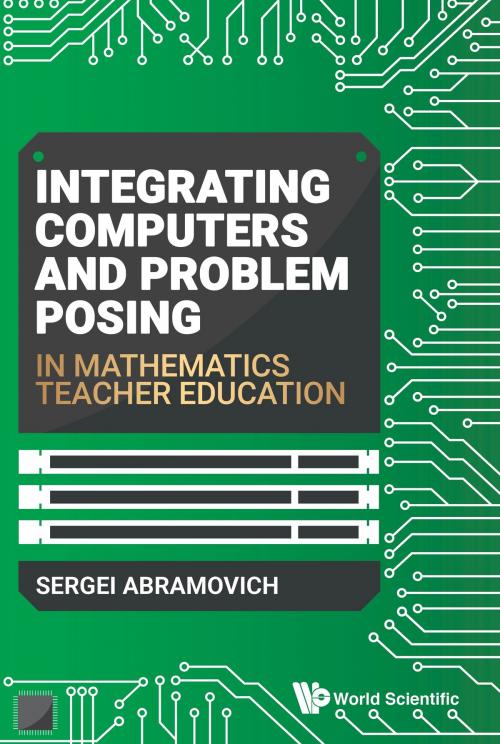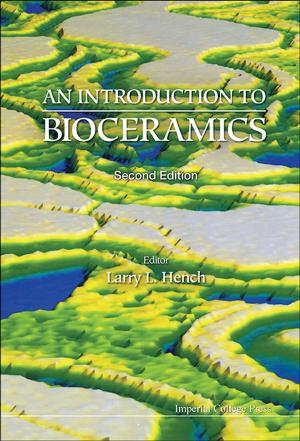Integrating Computers and Problem Posing in Mathematics Teacher Education
Nonfiction, Science & Nature, Mathematics, Study & Teaching, Reference & Language, Education & Teaching, Teaching, Teaching Methods| Author: | Sergei Abramovich | ISBN: | 9789813273931 |
| Publisher: | World Scientific Publishing Company | Publication: | September 12, 2018 |
| Imprint: | WSPC | Language: | English |
| Author: | Sergei Abramovich |
| ISBN: | 9789813273931 |
| Publisher: | World Scientific Publishing Company |
| Publication: | September 12, 2018 |
| Imprint: | WSPC |
| Language: | English |
The book is written to share ideas stemming from technology-rich K-12 mathematics education courses taught by the author to American and Canadian teacher candidates over the past two decades. It includes examples of problems posed by the teacher candidates using computers. These examples are analyzed through the lenses of the theory proposed in the book.
Also, the book includes examples of computer-enabled formulation as well as reformulation of rather advanced problems associated with the pre-digital era problem-solving curriculum. The goal of the problem reformulation is at least two-fold: to make curriculum materials compatible with the modern-day emphasis on democratizing mathematics education and to find the right balance between positive and negative affordances of technology.
The book focuses on the use of spreadsheets, Wolfram Alpha, Maple, and The Graphing Calculator (also known as NuCalc) in problem posing. It can be used by pre-service and in-service teachers interested in K-12 mathematics curriculum development in the digital era as well as by those studying mathematics education from a theoretical perspective.
Contents:
- Preface
- On the Genesis of Problem Posing in Mathematics
- From a Theory of Problem Posing to Classroom Practice of the Digital Era
- Posing Technology-Immune/Technology-Enabled (TITE) Problems
- Linking Algorithmic Thinking and Conceptual Knowledge Through Problem Posing
- Using Graphing Software for Posing Problems in Advanced High School Algebra
- Einstellung Effect and Problem Posing
- Explorations with Integer Sequences as TITE Problem Posing
- Appendices
- Bibliography
- Index
Readership: Mathematics teachers.
Key Features:
- Currently, no book exists devoted entirely to the use of computers in mathematical problem posing
- The use of integrated spreadsheets (a combination of Excel, Wolfram Alpha, and Maple) in problem posing through a computational experiment
- Presents new ideas about the development of pre-college level mathematics curriculum in the technological paradigm
The book is written to share ideas stemming from technology-rich K-12 mathematics education courses taught by the author to American and Canadian teacher candidates over the past two decades. It includes examples of problems posed by the teacher candidates using computers. These examples are analyzed through the lenses of the theory proposed in the book.
Also, the book includes examples of computer-enabled formulation as well as reformulation of rather advanced problems associated with the pre-digital era problem-solving curriculum. The goal of the problem reformulation is at least two-fold: to make curriculum materials compatible with the modern-day emphasis on democratizing mathematics education and to find the right balance between positive and negative affordances of technology.
The book focuses on the use of spreadsheets, Wolfram Alpha, Maple, and The Graphing Calculator (also known as NuCalc) in problem posing. It can be used by pre-service and in-service teachers interested in K-12 mathematics curriculum development in the digital era as well as by those studying mathematics education from a theoretical perspective.
Contents:
- Preface
- On the Genesis of Problem Posing in Mathematics
- From a Theory of Problem Posing to Classroom Practice of the Digital Era
- Posing Technology-Immune/Technology-Enabled (TITE) Problems
- Linking Algorithmic Thinking and Conceptual Knowledge Through Problem Posing
- Using Graphing Software for Posing Problems in Advanced High School Algebra
- Einstellung Effect and Problem Posing
- Explorations with Integer Sequences as TITE Problem Posing
- Appendices
- Bibliography
- Index
Readership: Mathematics teachers.
Key Features:
- Currently, no book exists devoted entirely to the use of computers in mathematical problem posing
- The use of integrated spreadsheets (a combination of Excel, Wolfram Alpha, and Maple) in problem posing through a computational experiment
- Presents new ideas about the development of pre-college level mathematics curriculum in the technological paradigm















